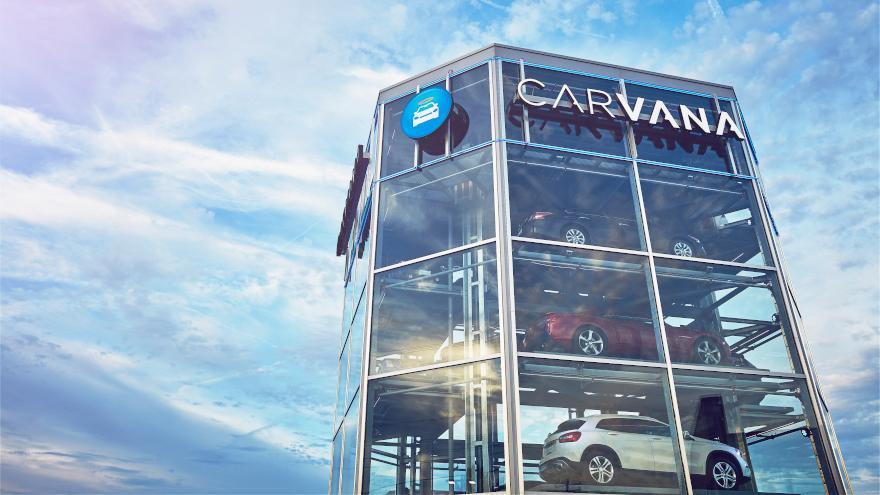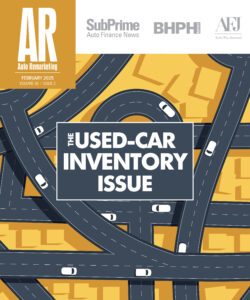Carvana slashes expenses and expects difficult year ahead

Carvana’s vending machine in Nashville, Tenn. Photo courtesy of Carvana/BusinessWire.
Slowing used vehicle sales, sliding profits and consumer affordability concerns are pushing Carvana to seek more ways to cut costs, said its top executive.
That’s in addition to $90 million in expenses the online used-vehicle retailer slashed in the third quarter that ended Sept. 30, said CEO Ernie Garcia, during the company’s quarterly earnings call on Nov. 3.
Though the company is on track with its goals from an expense and operational efficiency standpoint, that progress and its overall profitability are being hampered by more challenging industry demands, rising interest rates and vehicle depreciation headwinds, Garcia said.
Carvana’s used-vehicle sales, revenues and profits fell in the quarter and things are aren’t likely to get better in the near term, he added.
“We're building our plans around assumptions that the next year is a difficult one in our industry and in the economy as a whole,” Garcia said.
“We reduced expenses by about $90 million in the quarter, $360 million on an annualized basis as well as many other underlying operational metrics that are making those expense reductions possible.”
Indicators point to further slowing
Industry-wide used-vehicle sales were down approximately 10% to 15% in the third quarter compared to the same quarter last year, Garcia said, citing industry data sources that he did not identify.
Forward-looking indicators that the company uses internally such as web searches and activity on Carvana.com, indicates further slowing, Garcia added.
“Cars are an expensive, discretionary, often financed purchase that inflated much more than other goods in the economy over the last couple of years and is clearly having an impact on people’s purchasing decisions,” he said.
When compared to the third quarter of 2021, the company’s retail used unit sales tumbled 8% to 102,570, its total gross profit per unit fell 25.1% to $3,500 and its revenue dropped 3% to $3.38 billion. It’s revenue results include $193 million attributable to ADESA, which Carvana acquired from KAR Global in May.
Carvana’s total net loss of $508 million in the quarter compares to a total net loss of $68 million in the year ago quarter.
For the first nine months of the year, Carvana’s retail unit sales rose 4.2% to 325,319 and its revenue increased 18.8% to $10.76 billion. Its total gross profit per unit fell 28.5% to $3,237 in the first nine months of this year and its total net loss of $1.45 billion compares to a total net loss of $105 million in the first nine months of 2021.
Cost-cutting measures
In a shareholder’s letter accompanying Carvana’s earnings presentation, the company laid out initiatives taken to reduce costs and improve less profitable transactions.
For example, Carvana reduced its advertising expense by $14 million and its logistics expenses by $14 million sequentially in the quarter, the letter said.
The company is advertising less in what it is calls “distant markets.” These markets have lower profitability because their locations are longer distances from Carvana’s inventory sources, the letter said.
During the call Garcia said Carvana’s logistics network had rolled out a new management structure at its logistics hubs only and made several meaningful improvements in the quarter.
“Network utilization was up 8% quarter-over-quarter, we've seen average shipping miles per sale down 10%. That continued to go down further, since the quarter ended, “ he said.
The company is seeing additional gains at its hubs intends to roll out the new management structure “across the country, over the coming quarters.”
Carvana also said it realized $20 million in “other payroll savings” but did not explain what it meant. In May, the company laid off 2,500 employees according to a document it filed with the U.S. Securities and Exchange Commission.
The shareholder letter said Carvana is testing or rolled out several initiatives that increase profitability but have some offsetting sales impact, such as requiring payment at the time the customer places vehicle order instead of at delivery and incentivizing pick-ups and drop-offs at its automated delivery vehicle vending machines.
Integrating with ADESA
Also in its letter, Carvana said as of Nov. 3, it had embedded Carvana market hubs in 38 ADESA locations, up from 18 locations in August and is using the locations to “land” cars Carvana buys from customers that it intends to sell at wholesale. Carvana also inspects and reconditions over 500 units per week at the auction sites, complementing the company’s existing inspection and reconditioning centers, mostly in coastal locations.
Carvana will continue adding its operations to ADESA sites while preserving and over time improving on “the operations that successfully made ADESA the second largest used vehicle physical auction business in the U.S,” the company writes.
Since Sept. 30, Carvana opened a second inspection and reconditioning center near Sacramento and expects to complete construction on another such center near Chicago, in the fourth quarter.
More opportunities with Hertz
Garcia also said Carvana’s partnership with Hertz is going “very well.”
He said Carvana is putting even more focus on the partnership and believes there are big opportunities for two companies to work together.
In October 2021, the companies announced that Hertz would use Carvana’s online sales channel and logistics network to sell its retired rental vehicles directly to consumers.
“I think that it's led to some other opportunities between us, especially as we've added ADESA to kind of augment the overall capabilities that we have,” Garcia said.

 View The Latest Edition
View The Latest Edition

